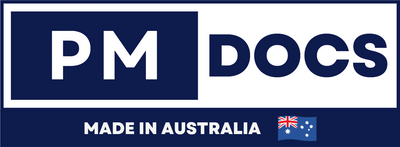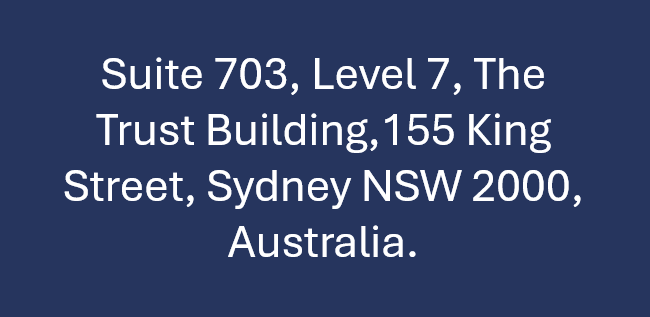ISO 27001 Certification In Australia: Complete Guide For 2025
ISO 27001 Certification In Australia: Your Complete Guide For 2025
In an increasingly digital world, information is a company's most valuable asset, and its protection is paramount. Data breaches, cyber-attacks, and regulatory scrutiny are on the rise, making robust information security management not just a best practice, but a necessity for survival and growth. For Australian businesses looking to demonstrate an unshakeable commitment to data protection, ISO 27001 certification stands as the gold standard.

But what exactly is ISO 27001, why is it particularly relevant for Australian organisations heading into 2025, and how do you achieve it? This comprehensive guide will walk you through everything you need to know.
What Is ISO 27001? The Foundation Of Information Security
ISO 27001 is an internationally recognised standard published by the International Organization for Standardization (ISO) and the International Electrotechnical Commission (IEC). It outlines the requirements for establishing, implementing, maintaining, and continually improving an Information Security Management System (ISMS).
An ISMS is a systematic approach to managing sensitive company information so that it remains secure. It encompasses people, processes, and technology, helping organisations identify, assess, and treat information security risks. Far from being a one-time IT project, ISO 27001 promotes a holistic, risk-based methodology that integrates security into the very fabric of your business operations.
Why ISO 27001 Is Crucial For Australian Businesses In 2025
The Australian business landscape in 2025 will be more digitally integrated and cyber-aware than ever. Here's why ISO 27001 is not just beneficial, but essential:
-
Growing Cyber Threat Landscape: Australian organisations face a constantly escalating threat from sophisticated cyber-attacks. ISO 27001 provides a robust framework to build resilience against these evolving threats.
-
Strengthened Regulatory Scrutiny: Australia's Notifiable Data Breaches (NDB) scheme, managed by the Office of the Australian Information Commissioner (OAIC), continues to evolve. Non-compliance or inadequate security measures leading to a breach can result in significant penalties, reputational damage, and loss of customer trust. ISO 27001 helps demonstrate due diligence.
-
Enhanced Customer and Partner Trust: In a market where data privacy concerns are paramount, ISO 27001 certification signals to customers, suppliers, and partners that your organisation takes information security seriously. This is a significant competitive differentiator.
-
Competitive Advantage in Tenders: Increasingly, government contracts and large enterprise tenders – both domestically and internationally – mandate or strongly prefer ISO 27001 certification from their suppliers.
-
Improved Internal Processes and Efficiency: By standardising security procedures and identifying critical assets, an ISMS can streamline operations, reduce human error, and foster a security-conscious culture.
-
Risk Management and Business Continuity: ISO 27001's risk-based approach helps organisations proactively identify and mitigate potential threats, contributing to better business continuity planning and disaster recovery.
- Global Recognition: As Australian businesses expand globally, ISO 27001 provides a universally understood and respected benchmark for information security.
The ISO 27001 Certification Journey: A Step-by-Step Guide
Achieving ISO 27001 certification is a structured process. While the exact steps may vary slightly, here's a typical roadmap for Australian organisations:
-
Commitment & Planning:
-
Gain Management Buy-in: Essential for resource allocation and driving the project.
-
Define Scope: Clearly identify which parts of your organisation, systems, and information assets will be covered by the ISMS. This is crucial for managing the project effectively.
-
Establish ISMS Policy & Objectives: High-level statements about your organisation's commitment to information security and what the ISMS aims to achieve.
-
Gain Management Buy-in: Essential for resource allocation and driving the project.
-
Risk Assessment & Treatment:
-
Identify Information Assets: What information do you have, where is it, and who uses it?
-
Conduct Risk Assessment: Identify threats (e.g., cyber-attacks, human error, natural disasters) and vulnerabilities to your information assets. Assess the likelihood and impact of these risks.
-
Define Risk Treatment Plan: Determine how you will address identified risks – mitigate, transfer, avoid, or accept them. This often involves selecting controls from Annex A of ISO 27001.
-
Identify Information Assets: What information do you have, where is it, and who uses it?
-
ISMS Design & Implementation:
-
Select Controls: Based on your risk treatment plan, select relevant controls from Annex A of ISO 27001:2022 (or the applicable version for 2025). Document justification for inclusion/exclusion.
-
Develop Documentation: Create policies, procedures, work instructions, and records required by the standard (e.g., Statement of Applicability (SoA), Risk Treatment Plan, Incident Management Plan).
-
Implement Controls: Put the selected controls into practice across your scope. This often involves technical configurations, process changes, and staff training.
-
Training & Awareness: Educate your employees about their roles and responsibilities regarding information security.
-
Select Controls: Based on your risk treatment plan, select relevant controls from Annex A of ISO 27001:2022 (or the applicable version for 2025). Document justification for inclusion/exclusion.
-
Monitoring, Review & Improvement:
-
Internal Audit: Conduct internal audits to verify that your ISMS is operating as intended and conforming to the ISO 27001 standard.
-
Management Review: Senior management regularly reviews the performance of the ISMS, ensuring its continued suitability, adequacy, and effectiveness.
-
Corrective Actions: Address any non-conformities or weaknesses identified during audits or reviews.
-
Continuous Improvement: The ISMS is a living system; continuously monitor and improve its effectiveness.
-
Internal Audit: Conduct internal audits to verify that your ISMS is operating as intended and conforming to the ISO 27001 standard.
-
Certification Audit:
-
Stage 1 Audit (Document Review): An external certification body reviews your ISMS documentation (e.g., ISMS Policy, Scope, SoA, Risk Treatment Plan) to ensure it meets the standard's requirements.
-
Stage 2 Audit (Main Audit): The certification body assesses the effectiveness of your implemented ISMS through interviews, observation, and examination of records. They will verify that your processes align with your documentation and the ISO 27001 standard.
- Certification Decision: If successful, the certification body issues your ISO 27001 certificate.
-
Stage 1 Audit (Document Review): An external certification body reviews your ISMS documentation (e.g., ISMS Policy, Scope, SoA, Risk Treatment Plan) to ensure it meets the standard's requirements.
Key Requirements & Annex A Controls
While the ISMS itself is the core, ISO 27001 provides Annex A, a set of 93 controls (in the 2022 version) categorised into 4 themes that organisations can consider implementing based on their risk assessment. This is not a mandatory checklist; rather, it's a comprehensive reference.
Here's a look at the key themes within Annex A and their purpose:
Table 1: Key Areas of ISO 27001 Annex A Controls (2022 Version)
| Control Theme (Clause) | Primary Focus | Example Controls (illustrative) |
|---|---|---|
| A.5 Organisational | Establishing policies, roles, and responsibilities. | Information security policies, roles & responsibilities, access rights. |
| A.6 People | Managing human resources, training, and awareness. | Background checks, information security awareness training, disciplinary processes. |
| A.7 Physical | Protecting facilities, equipment, and storage media. | Physical security perimeters, entry controls, clear desk/screen policy. |
| A.8 Technological | Implementing controls for systems, networks, and data. | Malware protection, secure configuration, network security, data backup. |
Note: The 2022 revision of ISO 27001 introduced new categories and consolidated controls. Organisations planning for 2025 should be aware of these updates.
Timelines And Costs For Australian Businesses
The time and cost involved in achieving ISO 27001 certification can vary significantly based on your organisation's size, complexity, existing security posture, and the chosen scope.
Table 2: Typical Timeline for ISO 27001 Certification (Australian SME)
| Phase | Estimated Duration (Months) | Key Activities |
|---|---|---|
| 1. Planning & Design | 1 - 3 | Scope definition, risk assessment methodology, policy development, initial gap analysis. |
| 2. Implementation | 3 - 9 | Developing procedures, implementing controls, staff training, documentation, acquiring necessary tools/software. |
| 3. Internal Audit & Review | 1 - 2 | Performing internal audits, management reviews, addressing non-conformities, refining ISMS. |
| 4. External Audit | 1 - 2 | Stage 1 Audit (documentation review), Stage 2 Audit (implementation review), addressing any major non-conformities, certification. |
| Total Project Time | 6 - 16+ | Highly dependent on internal resources and complexity. |
Cost Factors to Consider:
-
Consultancy Fees: Engaging an ISO 27001 consultant (highly recommended, especially for first-timers) can range from AUD $15,000 to $60,000+ depending on project scope and consultant experience.
-
Training: Internal staff training on ISO 27001 and specific security practices.
-
Technology & Tools: Upgrades to security software, hardware, or management tools.
-
Audit Fees: The cost charged by the certification body for Stage 1, Stage 2, and subsequent surveillance audits. This can range from AUD $5,000 to $20,000+ per year based on organisation size and complexity.
- Internal Resources: The time and effort of your own staff dedicated to the project.
Choosing The Right Partner: Consultants And Certification Bodies
-
Consultants: A good consultant can significantly streamline your certification journey. Look for those with:
- Proven experience in ISO 27001 for Australian businesses.
- Expertise in your industry sector.
- A clear methodology and transparent fee structure.
- Recommendations and case studies.
- Proven experience in ISO 27001 for Australian businesses.
-
Certification Bodies (CBs): This is the organisation that will assess your ISMS and issue your certificate. Ensure they are:
-
Accredited: Check their accreditation status (e.g., via JAS-ANZ in Australia) to ensure their certificates are valid and widely recognised.
- Reputable and have auditors experienced in your sector.
-
Accredited: Check their accreditation status (e.g., via JAS-ANZ in Australia) to ensure their certificates are valid and widely recognised.
Maintaining Your Certification
Certification is not a one-off event. To maintain your ISO 27001 certification, you'll undergo:
-
Annual Surveillance Audits: These shorter audits by your certification body ensure your ISMS continues to function effectively and that you are addressing any identified issues.
-
Re-certification Audits: Every three years, a full re-certification audit is conducted to ensure your ISMS remains compliant and effective.
- Continuous Improvement: Your ISMS should continually evolve with your business and the threat landscape.
Common Challenges And How To Overcome Them
-
Lack of Management Buy-in: Without senior leadership commitment, the project can falter due to insufficient resources or conflicting priorities.
-
Solution: Clearly articulate the business benefits (risk reduction, compliance, competitive advantage) to management.
-
Solution: Clearly articulate the business benefits (risk reduction, compliance, competitive advantage) to management.
-
Scope Creep: Defining too broad a scope initially can overwhelm resources.
-
Solution: Start with a manageable scope, often focusing on critical information assets, and expand later.
-
Solution: Start with a manageable scope, often focusing on critical information assets, and expand later.
-
Resource Constraints: ISO 27001 requires significant time and effort from internal teams.
-
Solution: Allocate dedicated resources, consider external consultants for expertise, and break the project into smaller, manageable phases.
-
Solution: Allocate dedicated resources, consider external consultants for expertise, and break the project into smaller, manageable phases.
-
Documentation Burden: The standard requires extensive documentation.
-
Solution: Leverage templates, integrate documentation into existing processes, and focus on practical, lean documentation that adds value.
-
Solution: Leverage templates, integrate documentation into existing processes, and focus on practical, lean documentation that adds value.
-
Maintaining Momentum: The project can be long, and it's easy to lose steam.
- Solution: Set clear milestones, celebrate successes, and have a dedicated project manager to keep things on track.
Conclusion
Achieving ISO 27001 certification in Australia for 2025 is a strategic investment in your organisation's future. It demonstrates a profound commitment to protecting information, building trust with stakeholders, and navigating the increasingly complex digital world. While the journey requires dedication and resources, the benefits – increased resilience, improved reputation, and a significant competitive edge – far outweigh the effort.
By understanding the requirements, planning meticulously, and engaging the right partners, your Australian business can confidently embark on its ISO 27001 certification journey, solidifying its position as a secure and trustworthy entity in the years to come.
Ready to start your ISO 27001 journey in Australia? Contact a reputable consultant or accredited certification body today to discuss your specific needs and take the first step towards robust information security.




